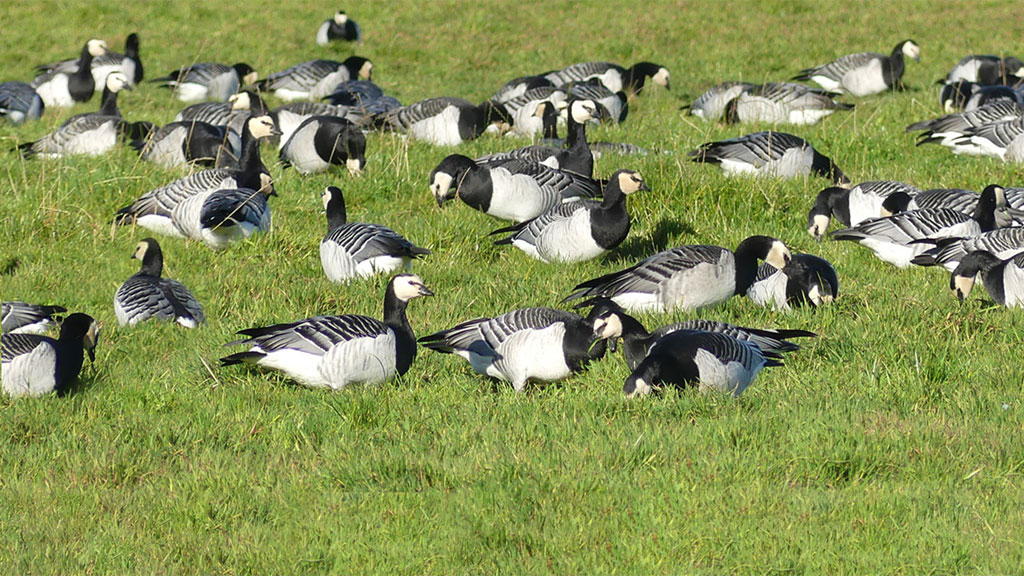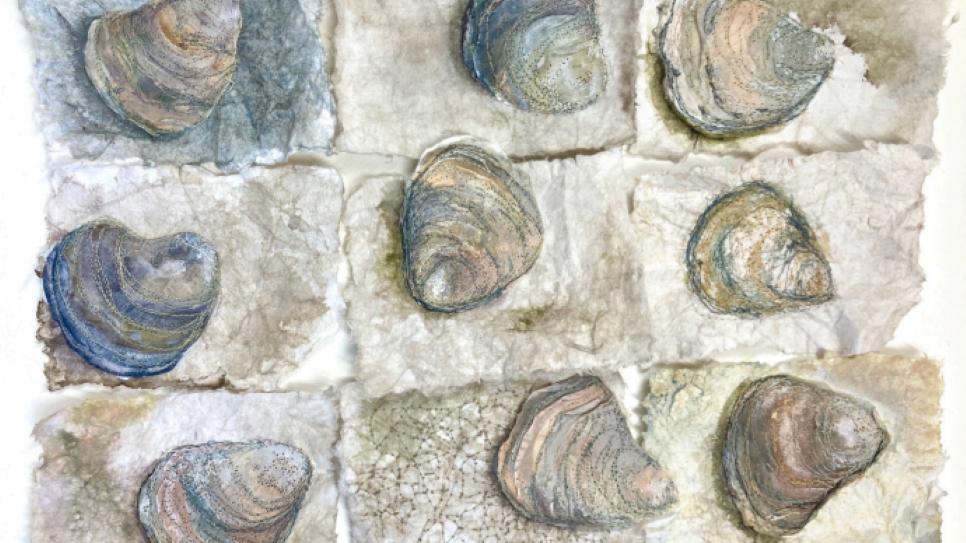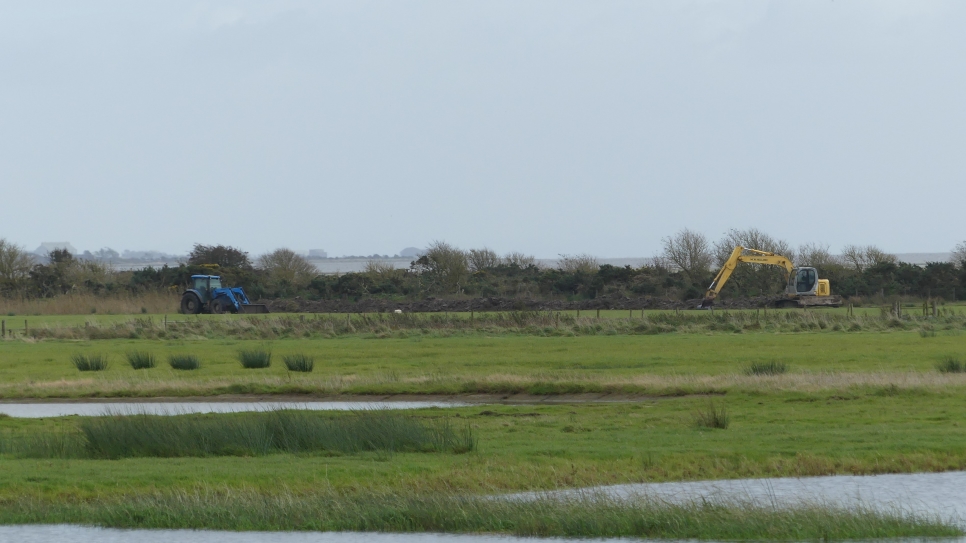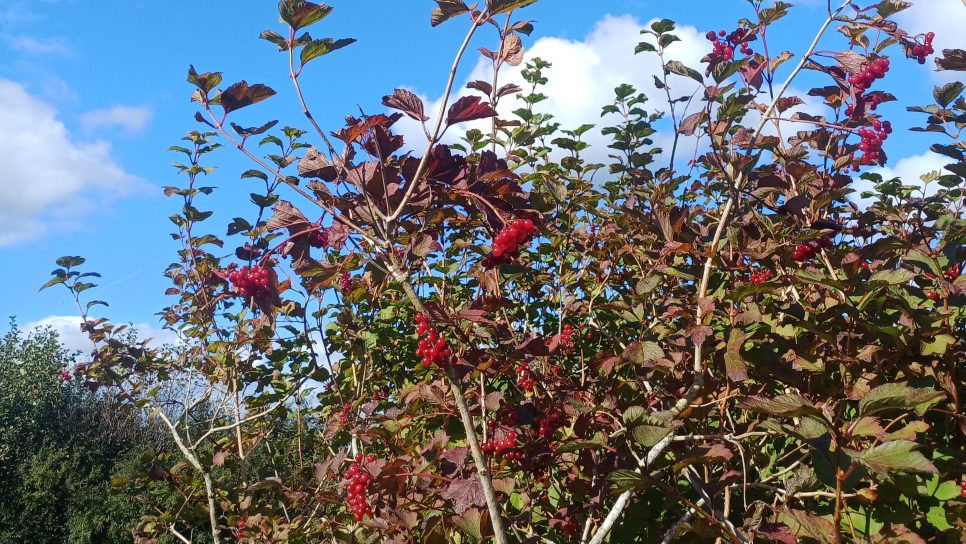Spoonbills, Snipe & special Sparrows
Spoonbills, Snipe and a leucistic House Sparrow are recent sighting highlights.

We had a nice visit from three Spoonbills this Monday (19th July). They had a good feeding session on our Folly pond much to the enjoyment of our visitors, volunteers & staff.
Their bizarre spoon-shaped bill is used for feeding, swept back and forth while being held slightly open, it filters out small invertebrates disturbed from the sediment by the birds vigorously paddling their feet.
When they hunt they swing their beaks from side to side in shallow pools of water and are able to detect any small crustaceans, worms, beetles, and small fish. Their bills are packed full of sensors which can detect the smallest of vibrations in the water, so any tiny creature doesn’t stand a chance!
In addition, there are some Snipe passing through. So far they have been sighted on the Folly & Whooper ponds.
 Snipe Photo by Lucy Mortlock
Snipe Photo by Lucy Mortlock
We have also spotted a leucistic juvenile House sparrow (pictured below to the top left beside the adult). Leucism is a variety of conditions resulting in the partial loss of pigment in an animal causing white, pale, or patchy colouration of skin, hair, feathers, scales, or cuticles, but not the eyes. In leucistic birds, affected plumage lacks melanin pigment due to the cells responsible for melanin production being absent. This results in a white feathers, unless the normal plumage colour also comprises carotenoids (e.g. yellows), which remain unaffected by the condition. Although leucism is inherited, the extent and positioning of the white colouration can vary between adults and their young, and can also skip generations if leucistic genes are recessive.
The reduction of pigment in leucistic birds causes feathers to weaken and be more prone to wear. In some situations, this can hinder flight, which, in addition to leucistic birds usually being more conspicuous, can heighten risk of predation. There is also evidence that leucistic birds might, on occasion, not be recognised or accepted by a potential mate.
‘leucism’ is being used as an umbrella term to encompass a number of plumage irregularities that can be difficult to distinguish from each other. One of these is called ‘progressive greying’, which also results in white feathers. While leucism is heritable, progressive greying is not – but without knowing the history of a bird, these two conditions are difficult to tell apart.
‘Dilution’ is another condition that is grouped under the category ‘leucism’. Here, plumage colour often appears ‘washed out’ (i.e. ‘diluted’). In dilution, melanin cells are present (unlike in leucistic birds) but produce less pigment than normal. White feathers can also be caused by chromatophore (pigment cell) defects, rather than an absence of melanin-producing cells.
 Leucistic juvenile House sparrow photo by Lucy Mortlock
Leucistic juvenile House sparrow photo by Lucy Mortlock
| Birds | Mammals | Insects |
| Spoonbill | Roe deer | Large red damselfly |
| Snipe | Hare | Azure damselfly |
| Osprey | Weasel | Four spotted chaser |
| Red Kite | Badger | Banded demoiselle |
| Great White Egret | Fox | Common darter |
| Kingfisher | Bank vole | Common blue butterfly |
| Redshank | Large skipper butterfly | |
| Lapwing | Speckled wood butterfly | |
| Grey Wagtail | Orange-tip butterfly | |
| Reed Warbler | Small white butterfly | |
| Willow Warbler | Green-veined White butterfly | |
| Sedge Warbler | Peacock butterfly | |
| Grasshopper Warbler | Red admiral butterfly | |
| Garden Warbler | Large white butterfly | |
| Swift | Small tortoiseshell butterfly | |
| Swallow | Wall butterfly | |
| House martin | Meadow brown butterfly | |
| Wheatear | Latticed heath moth | |
| Linnet | Painted lady butterfly | |
| Skylark | Ringlet butterfly | |
| Treecreeper | ||
| Nuthatch | ||
| Chiffchaff | ||
| Back cap | ||



